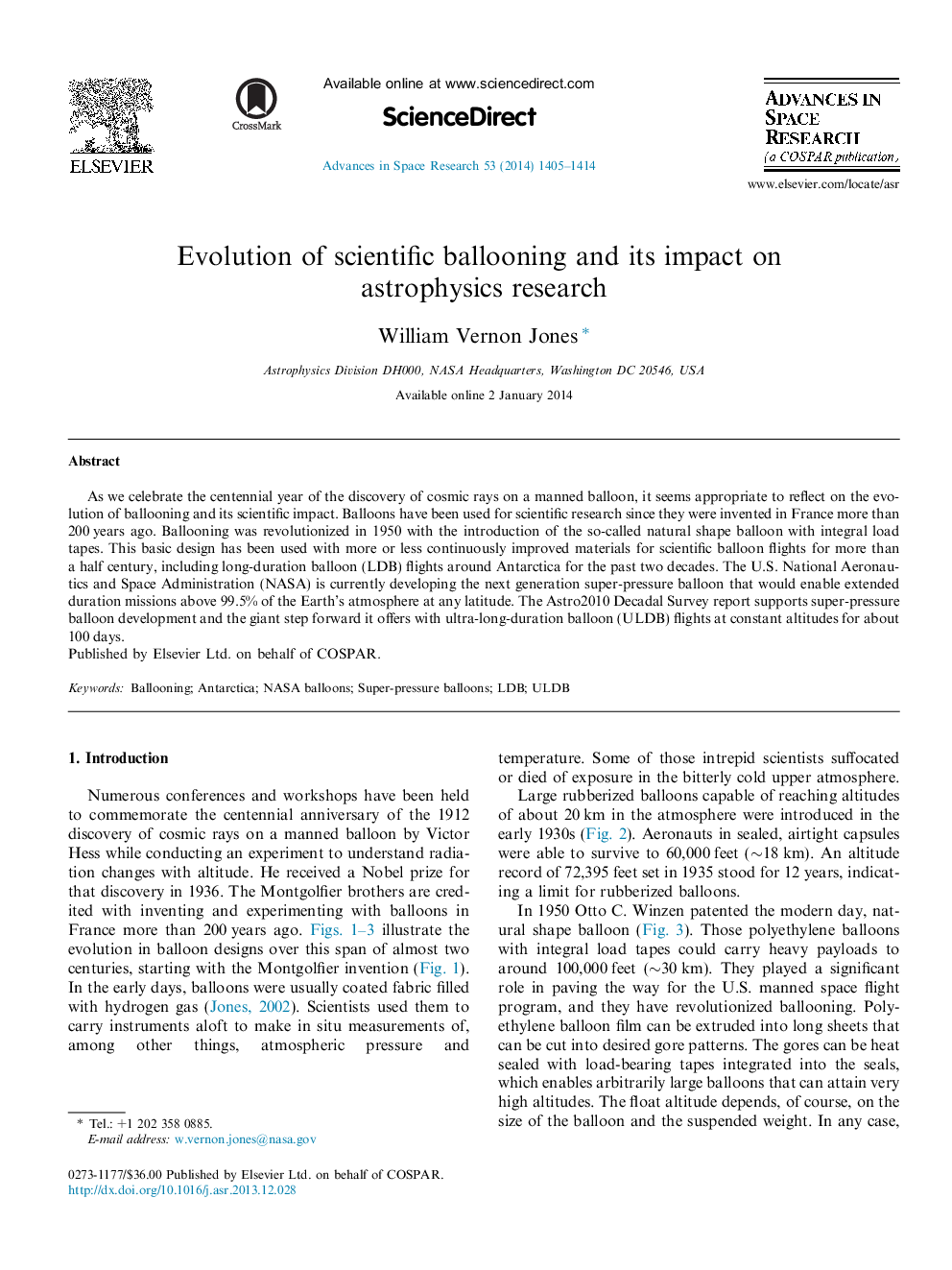| Article ID | Journal | Published Year | Pages | File Type |
|---|---|---|---|---|
| 1763691 | Advances in Space Research | 2014 | 10 Pages |
Abstract
As we celebrate the centennial year of the discovery of cosmic rays on a manned balloon, it seems appropriate to reflect on the evolution of ballooning and its scientific impact. Balloons have been used for scientific research since they were invented in France more than 200Â years ago. Ballooning was revolutionized in 1950 with the introduction of the so-called natural shape balloon with integral load tapes. This basic design has been used with more or less continuously improved materials for scientific balloon flights for more than a half century, including long-duration balloon (LDB) flights around Antarctica for the past two decades. The U.S. National Aeronautics and Space Administration (NASA) is currently developing the next generation super-pressure balloon that would enable extended duration missions above 99.5% of the Earth's atmosphere at any latitude. The Astro2010 Decadal Survey report supports super-pressure balloon development and the giant step forward it offers with ultra-long-duration balloon (ULDB) flights at constant altitudes for about 100Â days.
Keywords
Related Topics
Physical Sciences and Engineering
Earth and Planetary Sciences
Space and Planetary Science
Authors
William Vernon Jones,
